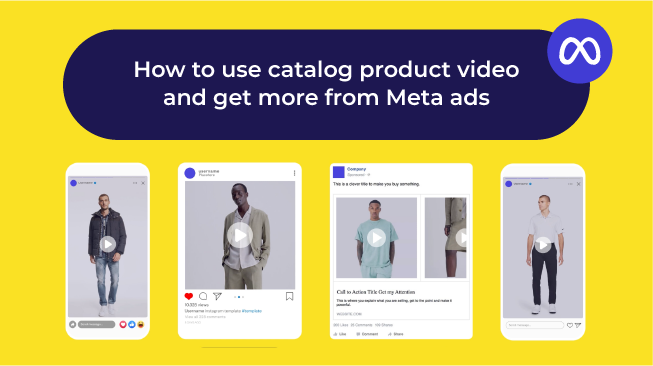You’re a retailer with products to sell, but how do you know which ones are the right ones to stock up on?
In this article, you’ll learn how to choose the best ingredients to stock up on through methods such as collecting customer feedback, monitoring in-store activity, analysing trends, and using product-performance data to improve demand forecasting.
Collect customer feedback

A great way to select your ingredients is through customer feedback.
Customer feedback is crucial to influencing your decision making, measuring customer satisfaction, enhancing customer loyalty, and guiding changes to your products or services.
You can collect customer feedback through a plethora of different methods, but the easiest way to achieve it is to simply ask.
How to ask for customer feedback
Send an email. This is a common practice for sellers on Amazon after a customer receives an order.
Use website pop-ups or forms. It’s an easy way for the user to know where and how to leave feedback directly on your site.
Conduct a survey. Make sure you have a good sample size. Then ask a series of multiple choice and/or short answer questions.
Utilise social media. Practise social listening through tools such as surveys, polls, and leaving direct comments and mentions on social media platforms.
Collect reviews. 89% of buyers check reviews before making a purchase, so having good product reviews will positively impact your sales, while negative feedback offers insight into what you should hold off on selling.
Knowing what your customers' opinions, interests, and desires are is essential for the health of your business. Direct feedback from them is a surefire way to better plan for what your target audience wants while simultaneously making them feel valued.
Monitor in-store activity
If you own a physical store, monitoring in-store activity, or foot traffic, will help guide your decisions on which products to order and which to stop purchasing to prevent lost sales and stockouts. Additionally, it helps you avoid over-stocking items that lead to deadstock.
Measuring in-store activity can also help you decide if holding retail real estate is still worth it for your business. A recent report by UBS predicted that around 50,000 physical retail stores in the US will close permanently by 2026, with apparel retailers taking the biggest hit.
How to measure in-store activity
Tracking in-store shoppers:
- Tally or clicker counting: an old school style, though not the most accurate
- Surveillance cameras: a simple way to gauge your busiest time of day, but also not the most accurate as far as exact numbers go
- Traffic tracking software: Your best bet for accuracy
Measure sales data: Sales data tells you how many shoppers made a purchase and what they bought. However, it doesn’t tell you anything about the shoppers who browsed around your store, but didn’t make a purchase.
To improve brick-and-mortar sales insights, you need to cross-reference the total number of customers who came into your store with the total number of orders processed by your store’s point-of-sale (POS) system. This will give you better conversion rate data, but don’t forget to factor in returns as well.
Encourage social media engagement: Host an in-store event that requires attendees to RSVP and/or fill out a survey, encourage shoppers to check in at in-store demos, create a social media check-in location, or require shoppers to provide information to log into your store’s wifi.
As shopping trends continue to shift toward e-commerce sales, it’s important to know which items are winning and losing in your brick-and-mortar stores.
Analyse trends
Another key practice to choosing your products is trend analysis, or the trend projection method, which uses your business’ historical sales and inventory data to spot demand trends. By analysing trends, you can find cycles in demand, seasonal trends, and time-based trends that either lead to an increase or decrease in demand.
Generally, trend analysis requires at least two years of data, as you need to have multiple full-year cycles to determine where trends in demand repeat annually.
Trend analysis is pretty simple to perform. You can easily track trends with software like Microsoft Excel or Google Sheets.
Improve demand forecasting with product-performance data

Demand forecasting is the process of analysing sales data from the past in order to more accurately predict demand in the future.
Product performance data is great for more accurate demand forecasting. It’s unique in that it allows you to see how each of your items perform at the individual level across all of your channels (Google Ads, Google Shopping, Meta, etc.).
By understanding the cross-channel performance of each product through metrics like revenue, stock level, and ad spend per SKU, you can easily find your best-selling products, your worst-performing products, low-stock and out-of-stock items, and much more.
With these crucial insights, your merchandising team can better decide which items to continue stocking up on, which items to stop buying, and which products you’re running low on. By adding product-performance data to your purchasing plans, you’re also able to reduce that thorn in every retailer’s side – deadstock.
Added bonus: It’s generally suggested to have at least two years of year-over-year data to more accurately forecast seasonality and trends, but with product-performance data, retailers are able to reduce the error rate of estimated versus actual demand from 55% to 8% after just two weeks of analysis.
Stocked and loaded
Knowing what items to stock up on is a crucial element for improving your retail business’ performance and profitability.
If you mix customer feedback, monitoring in-store activity, trend analysis, and product-performance data into your retail plan, you'll be healthily stocked and loaded with the right products for your customers and your business.
Dive into how product-performance data will have a huge impact on the future of e-commerce retailing here.



